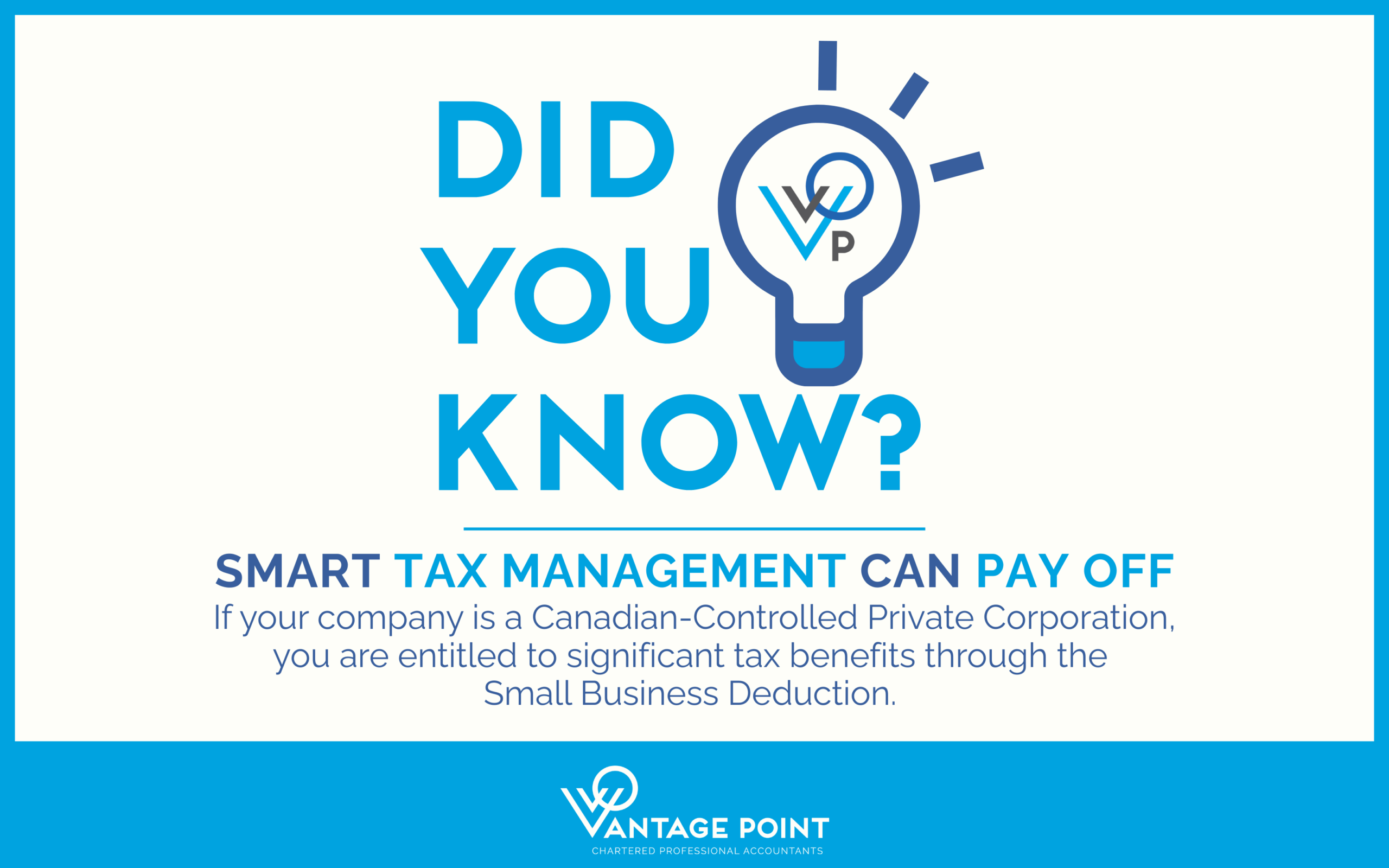As a business owner, you understand that effective tax management can help you keep more income. However, if your company qualifies as a Canadian-Controlled Private Corporation (CCPC) under the Income Tax Act, you are entitled to the Small Business Deduction (SBD). The SBD is one of the most significant tax advantages available to incorporated businesses in Canada. To fully benefit from the SBD, it is crucial to understand its details. In this post, we will explain how the SBD functions, who qualifies and how to maximize its benefits.
What is SBD?
The SBD is a federal tax deduction offered to CCPCs. In British Columbia, the SBD can result in an effective tax rate of 11% on a company’s first $500,000 of taxable income, creating significant tax savings that can be reinvested for growth.
Who Qualifies for SBD?
To qualify for SBD, your corporation must:
- Be a Canadian-resident private company classified as a CCPC
- Earn active business income.
- Conduct business primarily in Canada.
- Have taxable capital employed in Canada under $50 million.
Strategies for Maximizing SBD
- Managing Taxable Capital
Taxable capital refers to the total financial resources you utilize to generate business income. Reductions of the SBD begin when taxable capital exceeds $10 million and are entirely removed at $50 million. To remain below these thresholds, consider regular dividend distributions rather than accumulating retained earnings. You can also strategically structure debt financing and time significant capital expenditures at year-end. - Corporate Associations
To prevent business owners from artificially splitting operations to increase access to the Small Business Deduction (SBD), the Canada Revenue Agency requires that the $500,000 SBD limit be shared among associated corporations. However, strategic planning can help you optimize the SBD while complying with these regulations. Careful consideration should be taken when structuring a group of associated corporations to maximize the benefits of the small business deduction. - Investment Income
If your associated corporations earn excessive passive investment income, it can reduce access to the SBD. However, there are strategies you can implement to mitigate this while continuing to grow your wealth. For example, you can consider the type of passive investments that your associated group is invested in, time capital gains strategically across tax years, select growth-oriented investments, and consider options that generate active business income instead of passive income.
By strategically managing taxable capital, structuring corporate relationships wisely and carefully planning investment activities, Canadian business owners can maximize their access to the Small Business Deduction. This proactive approach not only preserves this valuable tax advantage but also enables entrepreneurs to reinvest the significant tax savings into what truly matters—expanding operations, improving competitiveness, and fueling sustainable business growth. If you have questions or need guidance on how to achieve this, we’re always here to help.
Disclaimer
The information contained herein is general in nature and is based on current tax laws that are subject to change. It is not, and should not be construed as, accounting, legal, or tax advice, or an opinion provided by Vantage Point Chartered Professional Accountants to the reader. This material may not be applicable to, or suitable for, specific circumstances or needs and may require consideration of other factors not described herein.


